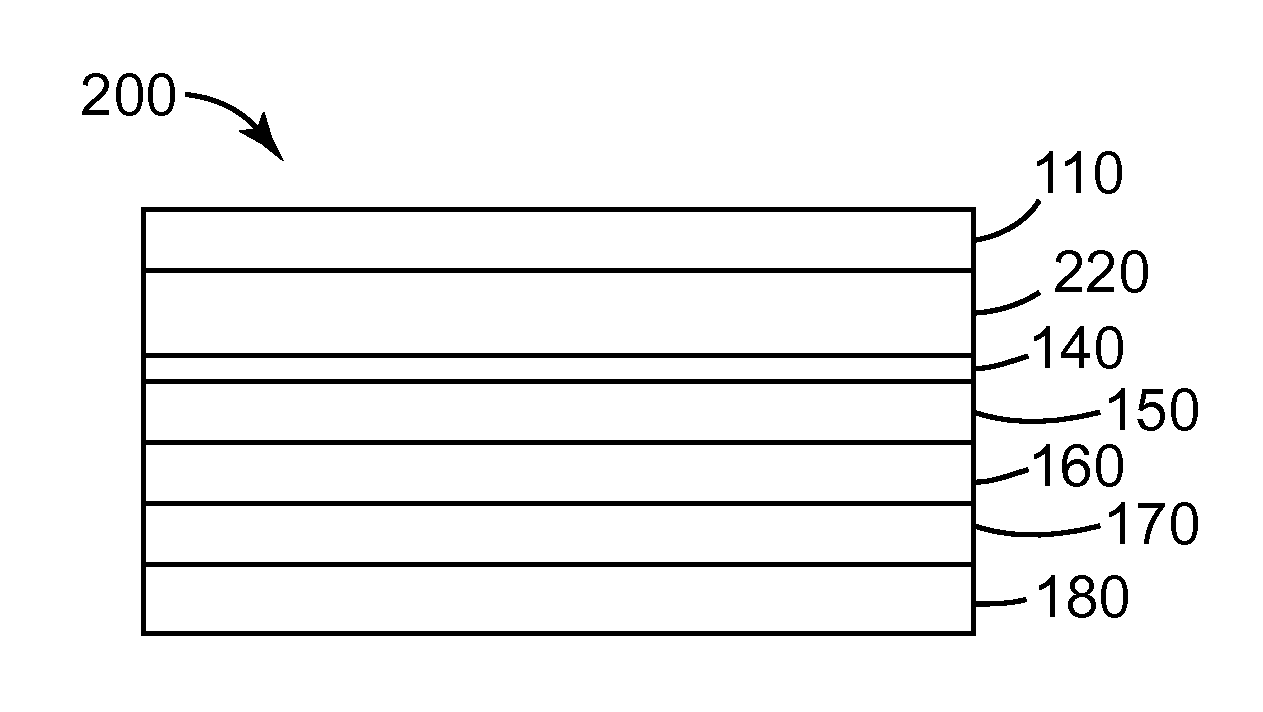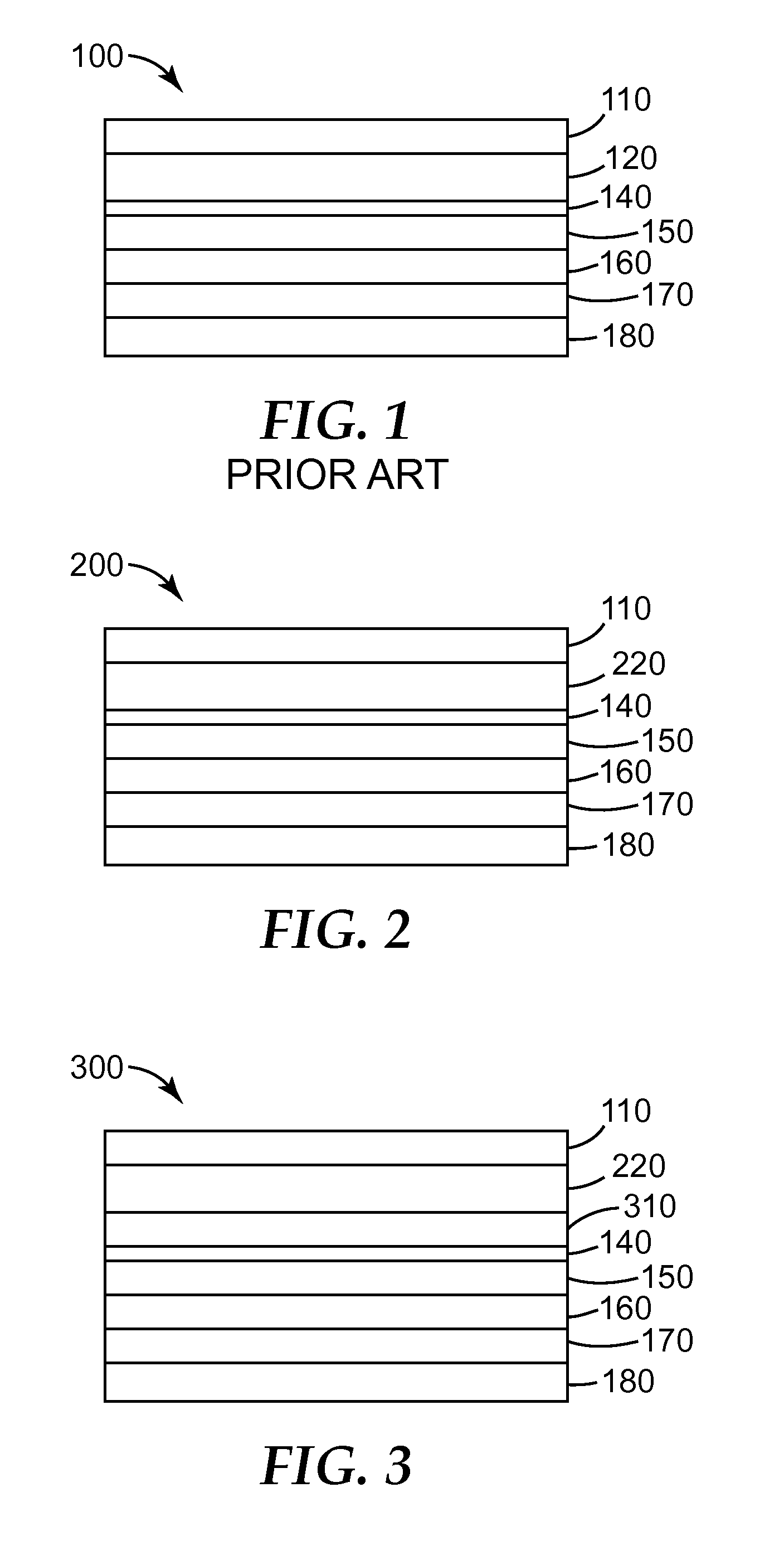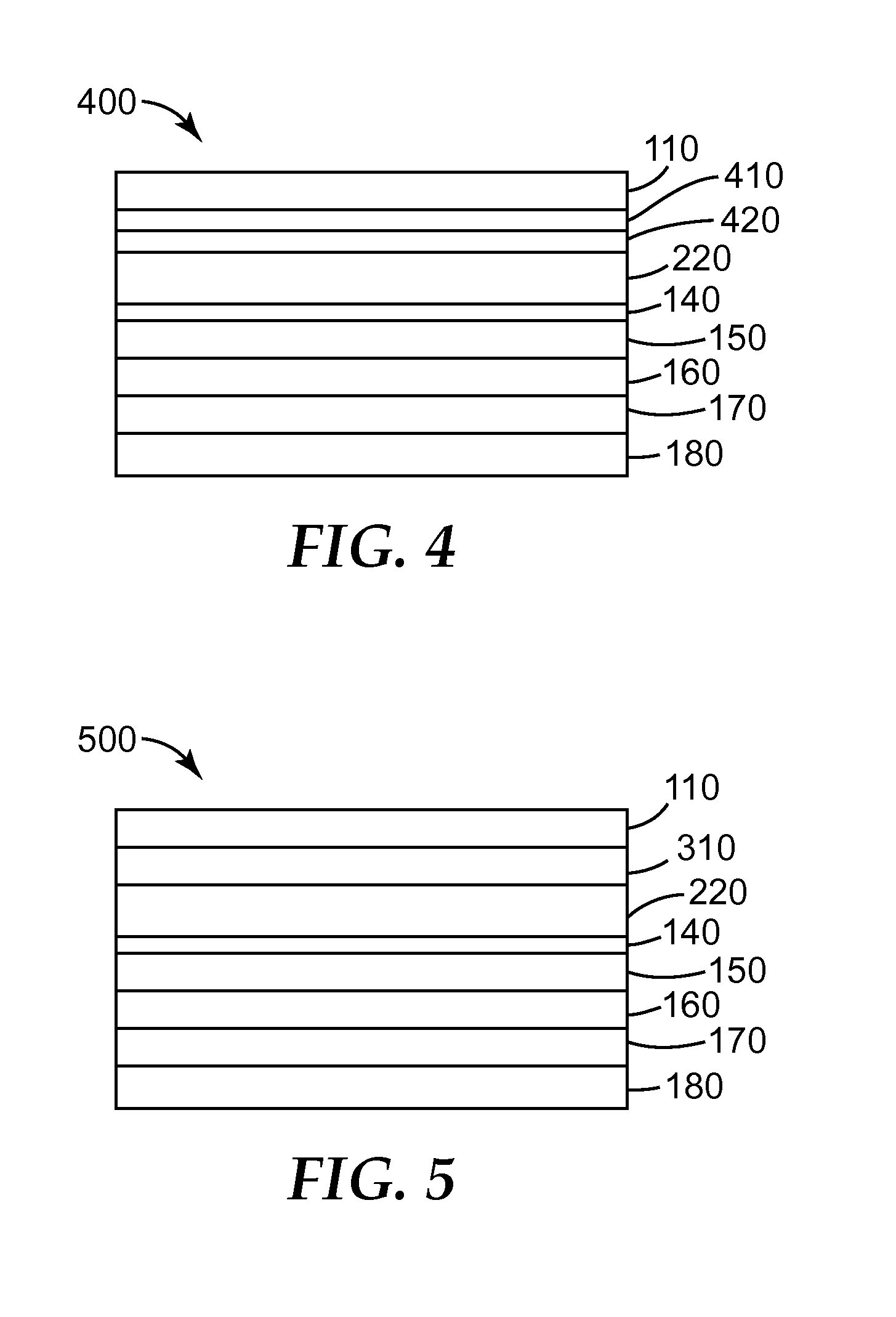Durable solar mirror films
- Summary
- Abstract
- Description
- Claims
- Application Information
AI Technical Summary
Benefits of technology
Problems solved by technology
Method used
Image
Examples
examples
[0081]Test Methods:
[0082]Coefficient of Hygroscopic Expansion (CHE):
[0083]Hygroscopic expansion was measured using a dynamic mechanical analyzer (DMA) (model “Q800” obtained from TA Instruments) coupled with a DMA-RH accessory (obtained from TA Instruments). Displacement (in m / m) was measured over a ramp of varying relative humidities, ranging from about 20% to about 80% at a constant temperature of 25° C. Changes in the sample dimensions caused by humidity changes are used to calculate the CHE. Results are expressed in parts per million (ppm) per percent relative humidity (% RH).
[0084]Neutral Salt Spray Test (NSS)
[0085]Corrosion of the comparative and examples was evaluated following the procedure outlined on ISO 9227:2006, “Corrosion tests in artificial atmospheres—Salt spray tests” with the exception that results are reported as visual observations after various times.
example 1
[0087]A multilayer optical film was prepared as following: a multilayer optical stack (described below) was prepared by coextruding first and second polymer layers through a multilayer polymer melt manifold to create a multilayer melt stream having five-hundred and fifty alternating layers. Two skin layers each having a thickness of approximately 4 microns were also co-extruded as protective layers on each side of the optical layer stack. The multilayer melt stream was cast onto a chilled roll creating a multilayer cast web. The multilayer cast web was then heated in a tenter oven to a temperature of about 105° C. prior to being biaxially oriented to a draw ratio of 3.8 by 3.8. A silver reflective layer approximately 100 nm thick was vapor deposited onto the film substrate. A copper layer approximately 80 nm thick was coated onto the silver layer. A 25 micron acrylic adhesive was coated onto the copper layer. The resulting multilayer optical film was bonded to an epoxy coated alumin...
example 2
[0091]A multilayer optical film was prepared as following: a multilayer optical stack (described below) was prepared by coextruding first and second polymer layers through a multilayer polymer melt manifold to create a multilayer melt stream having one hundred and fifty alternating layers. Two skin layers each having a thickness of approximately 4 microns were also co-extruded as protective layers on each side of the optical layer stack. The multilayer melt stream was cast onto a chilled roll creating a multilayer cast web. The multilayer cast web was then heated in a tenter oven to a temperature of about 105° C. prior to being biaxially oriented to a draw ratio of 3.8 by 3.8. A silver reflective layer approximately 100 nm thick can be vapor deposited onto the film substrate. A copper layer approximately 80 nm thick can be coated onto the silver layer. A 25 micron acrylic adhesive can be coated onto the copper layer. The resulting multilayer optical film can be bonded to an epoxy co...
PUM
| Property | Measurement | Unit |
|---|---|---|
| Nanoscale particle size | aaaaa | aaaaa |
| Nanoscale particle size | aaaaa | aaaaa |
| Relative humidity | aaaaa | aaaaa |
Abstract
Description
Claims
Application Information
 Login to View More
Login to View More - R&D
- Intellectual Property
- Life Sciences
- Materials
- Tech Scout
- Unparalleled Data Quality
- Higher Quality Content
- 60% Fewer Hallucinations
Browse by: Latest US Patents, China's latest patents, Technical Efficacy Thesaurus, Application Domain, Technology Topic, Popular Technical Reports.
© 2025 PatSnap. All rights reserved.Legal|Privacy policy|Modern Slavery Act Transparency Statement|Sitemap|About US| Contact US: help@patsnap.com



